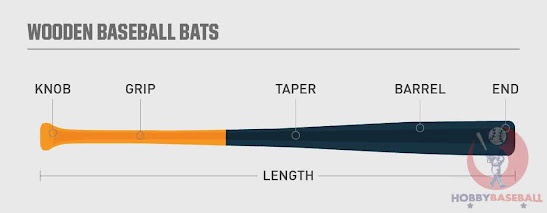What are the Differences Between Softball Bats and Baseball Bats?
With the baseball and softball seasons reaching a conclusion, this is one of the most mind-blowing times to go out and purchase that new bat you've been contemplating. Costs on baseball and softball bats will generally drop a smidgen when the games are unavailable, so buying a bat presently could save you a tad of cash.
Contingent upon which sport you play, and what style of that game, there are a couple of things you will need to take a gander at with regards to purchasing the right bat. What works for baseball may not work for softball, and what works for 12" quick throw softball may not work for 16" slow throw softball.
Understanding the game and why certain bats are made how they are, will assist you with figuring out which bat will best assistance you and your group. Since a bat is costly implies that it will be worse, and in light of the fact that a bat is modest doesn't mean it won't take care of business.
Consider it, in the event that you're not kidding" quick throw softball, which utilizes a hard ball (like a baseball), the bat you pick can assist with moving the ball quicker, however on the off chance that you're playing slow throw utilizing a mush ball, whether the bat is broken in, or has a ton of "pop" to it, won't exactly make any difference at the end of the day.
Polished ash and softball bats are not all made equivalent, so we should investigate what makes play clubs unique in relation to softball bats.
Play clubs versus Softball Bats
Baseball and softball bats fluctuate in a variety of ways. These distinctions are some of the time in view of the guidelines of the game, however frequently time they are a result of how the game is played, and due to who is playing the game.
For instance, while playing youth baseball, more often than not softball and sluggers have no distinction. The two of them have comparative shape and construction and are normally around similar loads and sizes, however when you climb to grown-up and secondary school level games, things change.
Bat Length - Softball versus Baseball
For grown-ups and high schoolers, slugging sticks normally top out around 33" while softball bats are ordinarily a piece longer at 34".
The justification for this length error has to do with how the games are played. In baseball, the pitcher is further away from the hitter and is marginally raised up when contrasted with the player, because of the pitcher's hill. While in softball, the pitcher is a lot nearer to the player and is on a similar level.
Along these lines, the additional inch on the softball bat considers the hitter to cover a greater amount of the plate when fixing to make something happen. Since there is less time for the player to respond to the pitch, because of the more limited distance and level of the pitcher, having that additional piece of length to arrive at the beyond the plate can be very useful.
In baseball the ball is commonly voyaging quicker than a softball, so having a more limited bat can consider faster development while getting the bat off your shoulder and playing out a going full bore. Furthermore, in light of the fact that the pitcher is a little further away and raised, the player has somewhat more chance to adapt for pitches outwardly of the plate, in this manner decreasing the bat by an inch to get the additional bat speed is a preferred choice over having that additional inclusion.
#hobbybaseball #zanewiller #zanewillerhobbybaseball
Read More: What are the Differences Between Softball Bats and Baseball Bats?





Comments
Post a Comment